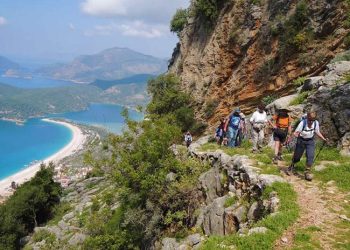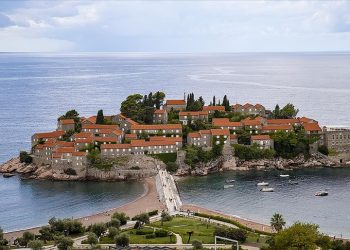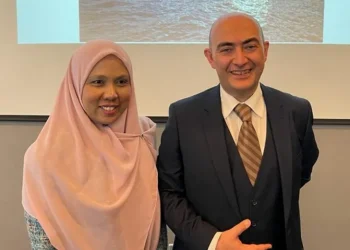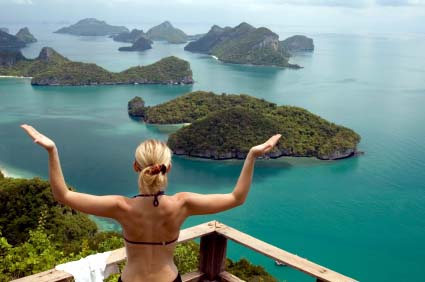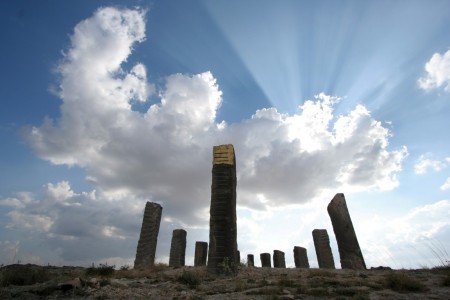
The barren windswept hillsides of northern Cappadocia, Turkey have been chosen to contain the largest land art park in the world, a creation by Australian artist Andrew Rogers.
Cappadoccia, Turkey / NationalTurk – Danielle North, a travel writer and art historian from Netherlands lives currently in Cappadocia. She has recently written an article about the new sculpture park in Cappadocia created by the Australian artist Andrew Rogers.
The first of these gigantic artworks were created in 2007 and the last ones were completed just last year. Here is the article:
Time and Space: blending contemporary art with history and nature
By Danielle North
The barren windswept hillsides of northern Cappadocia have been chosen to contain the largest land art park in the world, a creation by Australian artist Andrew Rogers.
The gigantic sculptures of Time and Space can be seen from afar and combine contemporary art with the nature and history of Cappadocia. With the completion of the sculpture park the region, already well known for its extraordinary landscapes, cave dwellings and Byzantine rock-cut churches, now has a new chapter to add to its vibrant history.
Travelling throughout Turkey one continuously stumbles upon a reference to the country’s past, from an imposing statue of Atatürk in the local town square to an excavation site uncovering a much more distant era in the country’s history. With historical sites and archaeological museums in abundance, it sometimes seems that there is little place left for displays of modern or contemporary works of art for the general public. That this is slowly changing, also outside of the country’s major cities, can be concluded from the creation of the sculpture park known as Time and Space in the popular tourist destination Cappadocia, Central Anatolia.
Created by Australian sculptor Andrew Rogers Time and Space (2007 – 2011) consists of a series of contemporary sculptures placed in an environment especially chosen for their creation. This ambitious collection of gigantic stone structures is not only unique to Turkey, but its grand scale renders it without comparison in the rest the world. The thirteen sculptures are spread out over a number of otherwise monotonous hills just west of Avanos, covering an area more than 2,5 km in length and a kilometre in width, with the tallest structure a towering 19,5 meters high.
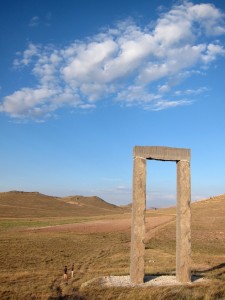
Time and Space forms part of Rogers ongoing Rhythms of Life, a project started in 1998 and comprising of a chain of land art sculptures around the globe, at the moment encompassing 13 countries and 7 continents including such remote places as the Gobi desert in China and the glaciers of Antarctica.
Approaching the site from the main road running between Nevşehir and Avanos the first two visible works of Rogers are The Gift, a large horse flanking a steep sloping hill, and a little further along the erect dark stone blocks that form the work Day on Earth. They call to mind mysterious monuments as Stonehenge and the white horses on the hillsides of southern England, but also the ancient Nazca Lines in Peru. Although Rogers does not specifically aim to refer to these particular sites, the works that Time and Space consists of do contain a strong emphasis on history and heritage in general. As Andrew Rogers himself explains: “The structures address the cycle of life and the interconnection of humanity throughout time and space. They are about an idea not the structure itself”.
The thirteen works of the sculpture park can be divided into linear works, gigantic drawings on the ground also known as geoglyphs, and works consisting of large basalt blocks and pillars of varying sizes. The geoglyphs are all but one figurative, and are made of loose stones stacked to form walls between one and two meters in height. Due to their enormous dimensions these gigantic sculptures are best observed in their totality from above, ideally while slowly drifting along in one of the many hot air balloons that take off around Göreme every morning. Nevertheless, even though the overview is easily lost when these works are encountered up close, a real sense of them is only achieved from the intimate vantage point obtained on the ground.
At close quarters the sculptures seem perfectly at home here as they effortlessly blend into their natural environment, achieved in part by the use of locally found materials, as well as being inspired by local sources, both important characteristics of all of Rogers’ Rhythms of Life structures. The model for the proud horse of The Gift is an ancient rock carving now on display in the local archaeological Museum in Nevşehir, and signifies the important role the animal used to play in this region in ancient times. Grind on the other hand is a depiction of a millstone, inspired by one preserved in Göreme, but a type once widely used throughout Cappadocia.
These sculptures convey clear motifs, which even if seen for the first time, appear familiar, like Roger’s Siren, a mythological creature with a human head and the body of a bird. Or Strength, the majestic looking lion with two bodies, based on an image found 60 km away in the Seljuk caravanserai Sultanhanı near Aksaray. The only completely abstract work in this category is Rhythms of Life, a variation of which appears in all of Rogers land art projects across the planet. The original Rhythms of Life sculpture was created in bronze in 1996, and has been translated into geoglyphs composed of a collaboration of graceful lines and geometrical shapes, its title spanning past, present and future.
These sculptures stand in stark contrast to the groups of rugged columns that have been erected in their vicinity. One of the most imposing of these basalt stone structures is Day on Earth, consisting of a row of 12 slender columns dominating the top of a hill and overlooking the arid landscape of Cappadocia stretching out below. A few of the columns have been inscribed with words in Turkish as well as their English equivalent, words that convey universal values such as peace, liberty and compassion, and that according to Rogers reflect on the fragility of life and society. The colonnade ends with a 19,5 meter high archway called the Arch of Memory, signifying the importance of memory, ‘because’ states Rogers ‘without memory we are nothing’. Crossing over the hilltop to the north of Day on Earth and taking the dirt track to the west leads to Listen. A small amphitheatre has been carved out of the side of the hill here and is connected to a basalt arch by a long, narrow white path. Visitors are invited to pause here and sit and listen to the silence of the surrounding land, while contemplating Time and Space and the eternal cycle of life it portrays.
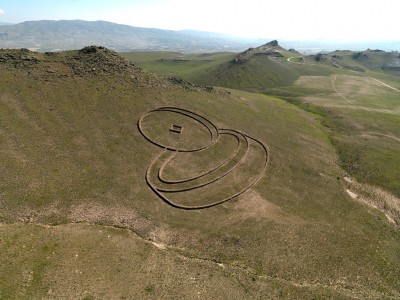
The sculptures are spread out over a number of intersecting hills and visitors will have to spend at least a couple of hours here in order to take them all in. Orientating oneself before visiting the sculpture park can be wise, as the artist chooses to provide no information at the site, not even a board marking where the sculptures lay in relation to one another or how to get to them. There is also no form of protection or upkeep, as Rogers opts to leave them to the mercy of the elements and let them be reclaimed by the land over time.
Already part of Day on Earth has collapsed, its ruined state giving it the air of an antique site. Although visitors may have difficulty locating all the works, the lack of signposting and routing adds an apt exploratory element to the visit, with those curious wandering around not knowing which geoglyph may lay hidden over the next hilltop or past the next bend in the dirt road. The ancient character of the sculptures and desolate setting, as well as the sheer size of it all can’t help but to impress, as passers-by are forced to stand in awe, and wonder about its existence and the achieved harmony between art, history and nature.
The sculpture park is a unique gain for Cappadocia, adding to its diversity and a first step on the way of introducing contemporary art to the region, not only to its local inhabitants, but also the large and continuously growing number of tourists that visit this part of Turkey each year.







